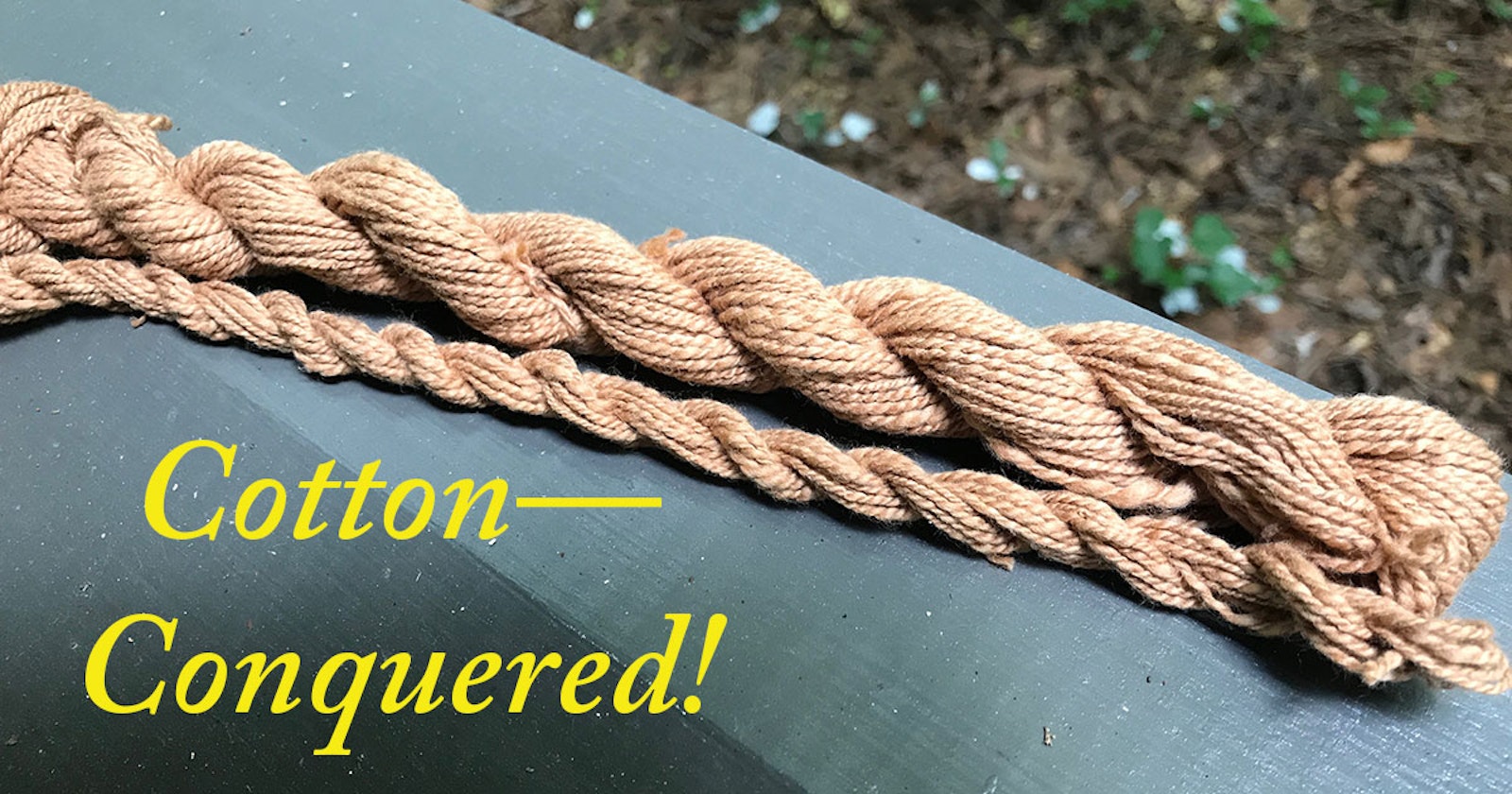For me, this meant leaving behind my beloved wool and wool blends for most of the race, instead focusing my energies on spinning cotton yarn of various origins and preparations.
I spun this green ginned cotton lint directly from teased fluff and after lightly hand carding and rolling it into punis.
When learning any new skill, the initial stages can be humbling. I spent hours at the wheel (set on its smallest whorl, or a ratio of 15:1), yet for days I felt as if I’d made almost no spinning progress. It turns out that spinning such a short-stapled plant fiber requires a certain focus, at least initially, that my default longer-stapled protein fibers do not. The first two days in particular, I was reminded of how frustrated I felt at my wheel just a handful of years ago, as a brand new spinner.
But on the third day, I felt a shift. My hands became acclimated to the feel of my drafting. My singles were no longer drifting apart and breaking, as my high twist had become more purposefully distributed. Though still plodding away slowly, I could see then that these new layers on my bobbin were going to ply up beautifully.
I took a well-earned break and spun wool on my spindles on the fourth day. And would you believe . . . I found myself craving a return to my spinning cotton project.
The very earliest layers of spinning this green cotton were humbling.
From that point on, I knew that I had conquered cotton. The joy I felt from plying up my first sample skein (spun from a carded sliver) had me wanting to try all the means and methods available to me from within my own stash. I spun directly from ginned lint (not my favorite), created and then spun up this same lint as punis (much better), and began playing with skein finishing (boiled in plain water, boiled with a dash of washing soda, and finished as I would finish my spun wool).
The best part of this journey—what made me see it through—was the support of my teammates on Team Spin Off. A few of us agreed to spin cotton together virtually, and I loved this camaraderie. Those who were not spinning cotton cheered along, making our accomplishments feel that much more heroic.
If you have a personal spinning challenge you’d like to achieve, here are some tips for success:
- Find a support group of others interested in learning about or attaining the same achievement. This can be a virtual or real-life network.
- Stay accountable by posting photos and updates regularly, be they shows of success or what you consider to be misses.
- Practice for a set amount of time daily.
- Reward your efforts to stay motivated. (I gave myself permission to start spinning a cherished batt using some of my favorite spindles.)
- Provide yourself more than one pathway to get to where you’re going. If you’re learning to spin a new-to-you sheep breed, for example, make sure you try spinning it from woolen and worsted prep, commercially prepared, and in raw or clean lock form, if available.
All in all, I have found spinning cotton yarn to be more effort than spinning wool yarn, but I am overjoyed to have started down its path.
DEBBIE HELD is a freelance business journalist who chose full-time spinsterhood after an extended illness. She lives in the Atlanta area with her wool and wheels, where she’s usually spinning and working on her next crafting article. She may be reached via her website, www.debbieheld.com.



